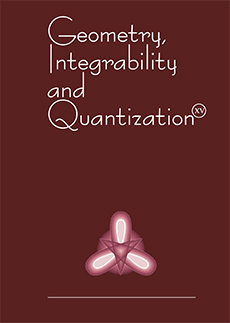Abstract
We are dealing below with the tetrad models of gravitation and with certain modifications of this relatively old and partially forgotten subject. The problem is studied in a general $n$-dimensional manifold, not necessarily in the usual four-dimensional space-time. So strictly speaking, we are dealing with fields of frames ($n$-legs) rather than with literally understood tetrads (four-legs, Vierbeine). The main novelty of our models in comparison with traditional ones is that it is the total globally acting $\mathrm{GL}(n,\mathbb{R})$ that is used as the group of internal symmetries. In traditional approaches one uses the globally or locally acting Lorenz group $\mathrm{SO}(1,n − 1)$. And obviously, our models, according to the Einstein–Hilbert paradigm are generally-covariant. We have shown that group spaces of Lie groups or certain their deformations are special vacuum-type homogeneous solutions of the model. Interaction with the bispinor field is briefly discussed and certain cosmological aspects of our models (cosmological expansions, escaping of galaxies) are mentioned. The model sheds new light onto this important problem. It may also have to do with the important problem of dark matter. In a sense, our model may be also interpreted in mechanical terms, as a theory of relativistic continuum with microstructure (relativistic micromorphic continuum), so in a sense, the traditional gap between field theory and mechanics becomes diffused. There are also certain features of our model which seem to be interesting from the point of view of multidimensional Kaluza–Klein universes (models generally covariant in a multidimensional sense, with fibration and fundamental group structures appearing as features of some special solutions). Spherically symmetric solutions of our models are in a sense formally similar to the t’Hooft–Polyakof monopole.
Information
Digital Object Identifier: 10.7546/giq-6-2005-126-172


